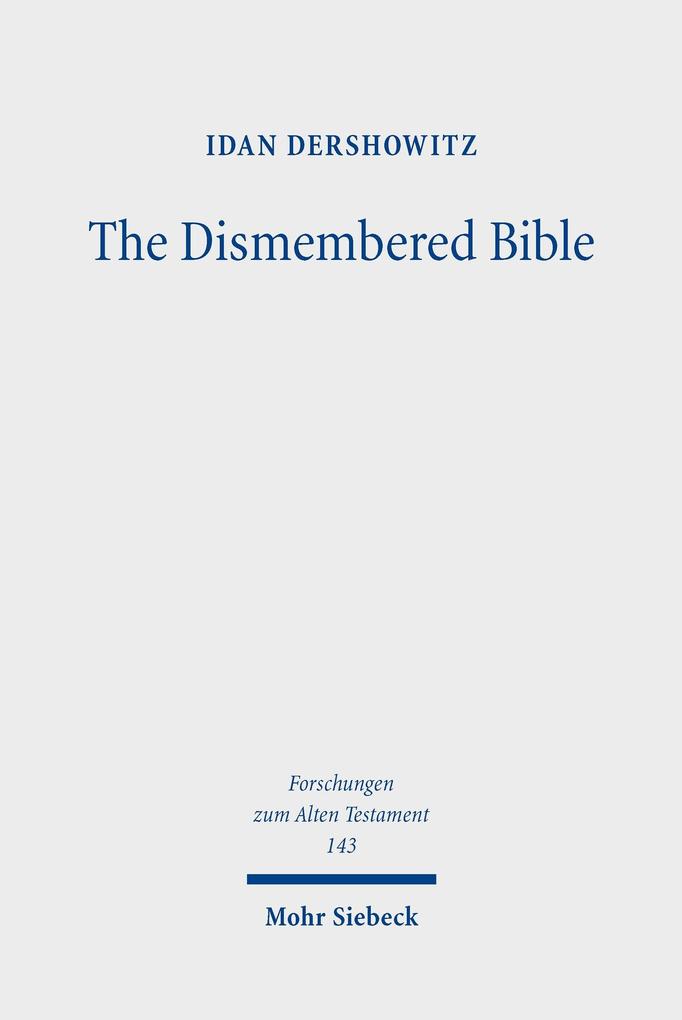
Sofort lieferbar (Download)
It is often presumed that biblical redaction was invariably done using conventional scribal methods, meaning that when editors sought to modify or compile existing texts, they would do so in the process of rewriting them upon new scrolls. There is, however, substantial evidence pointing to an alternative scenario: Various sections of the Hebrew Bible appear to have been created through a process of material redaction. In some cases, ancient editors simply appended new sheets to existing scrolls. Other times, they literally cut and pasted their sources, carving out patches of text from multiple manuscripts and then gluing them together like a collage. Idan Dershowitz shows how this surprising technique left behind telltale traces in the biblical text - especially when the editors made mistakes - allowing us to reconstruct their modus operandi. Material evidence from the ancient Near East and elsewhere further supports his hypothesis.
'This is an extremely stimulating study that will have a lasting impact on the scholarly discourse. [...] The Dismembered Bible is an outstanding example of what biblical studies can learn from neighboring disciplines and hopefully marks only the beginning of a more intense dialogue between exegesis and research on material aspects of textual production.'
Translation of Anja Klein in Theologische Revue, 117. Jahrgang, September 2021, https://doi.org/10.17879/thrv-2021-3568
Born 1982; undergraduate and graduate training at the Hebrew University, following several years of yeshiva study; 2017 elected to the Harvard Society of Fellows; since 2020 Chair of Hebrew Bible and Its Exegesis at the University of Potsdam.
Produktdetails
Erscheinungsdatum
01. Februar 2021
Sprache
englisch
Seitenanzahl
188
Dateigröße
7,28 MB
Reihe
Forschungen zum Alten Testament
Autor/Autorin
Idan Dershowitz
Verlag/Hersteller
Kopierschutz
mit Adobe-DRM-Kopierschutz
Family Sharing
Ja
Produktart
EBOOK
Dateiformat
PDF
ISBN
9783161598616
Entdecken Sie mehr
Bewertungen
0 Bewertungen
Es wurden noch keine Bewertungen abgegeben. Schreiben Sie die erste Bewertung zu "The Dismembered Bible" und helfen Sie damit anderen bei der Kaufentscheidung.









